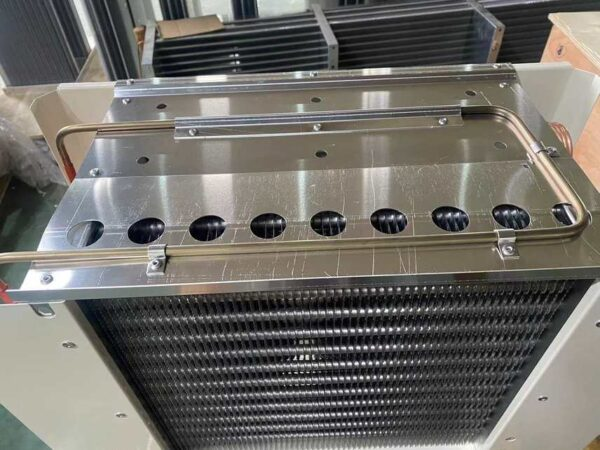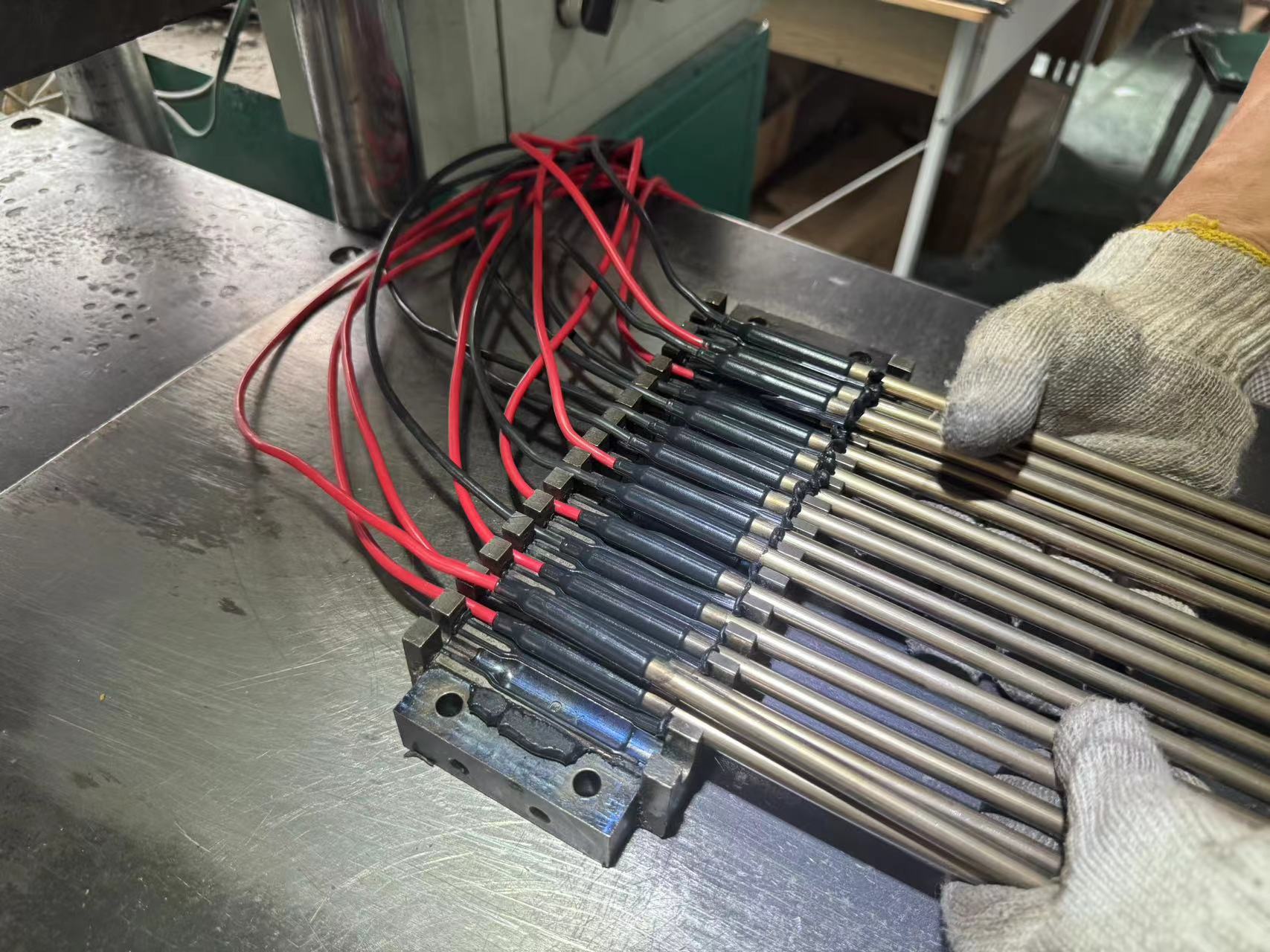In the cold air cooler units, the defrost heating tubes (or defrost heaters) are the core components that ensure the efficient operation of the refrigeration system. They directly address the performance degradation caused by the accumulation of frost on the evaporator. The mechanism of their operation and their application value can be systematically summarized as follows:
Ⅰ. Core Function: Forced Defrosting to Ensure Refrigeration Efficiency
1. Remove Frost Blockage
*** Root Cause of the Problem: When the air conditioner/air-cooler unit is operating, the surface temperature of the evaporator fins is below 0°C. Water vapor in the air will condense into frost and gradually thicken (especially in environments with a humidity level greater than 70%).
*** Consequences:
~ The frost covering the fins hinders the flow of air → The air volume decreases by 30% to 50%.
~ The frost layer forms a heat-insulating layer → The heat exchange efficiency drops by more than 60%.
~ The compressor is forced to operate for a longer time due to the decrease in return gas pressure → energy consumption surges.
*** Heating tube solution:
After power is applied, the surface of the defrost heating tube rises to 70 - 120℃, directly melting the ice frost between the fins → restoring the air passage and enhancing the heat exchange efficiency.
2. Preventing ice blockage in the drainage system
*** Key pain point: If the drainage pipe at the bottom of the cooling fan gets frozen and clogged, the defrosting water will flow back into the warehouse and freeze, posing safety risks.
*** Heating tube application:
Wrap a silicone rubber drain line heating wire around the drainage pipe (with a power density of 40-50W/m), maintaining the pipe temperature above 5℃ → Ensure that the defrosting water can be discharged smoothly.
Ⅱ. Work Logic and System Collaboration
1. Defrosting Trigger Mechanism
*** Time Control: Start defrosting according to the preset cycle (e.g., defrost once every 6 hours);
*** Temperature sensing: The surface temperature sensor of the evaporator detects the thickness of the frost layer. When the threshold is reached, defrosting is triggered.
*** Pressure difference control: Monitor the pressure difference between the two sides of the evaporator. If the difference exceeds the limit, it indicates that the air resistance is too high and defrosting is required.
2. Defrosting Procedure
Ⅲ. Design Features and Compatibility with Cold Storage
|
Characteristics |
Requirements for Cold Storage Application |
Defrost Heating Tube Implementation Scheme |
|
Low Temperature Flexibility |
Still needs to closely adhere to fins at temperatures below -30℃ |
Soft silicone outer layer maintains flexibility, no risk of breakage during winding installation |
|
Moisture-proof Sealing |
High humidity environment (relative humidity in cold storage > 90%) |
Double-layer silicone insulation + molded joints, waterproof rating above IP67 |
|
Precise Temperature Control |
Prevents overheating damage to fin aluminum materials |
Internal temperature fuse (melting point 130℃) or external temperature controller |
|
Corrosion Resistance |
Resistant to defrost water and refrigerant environment |
Fluorine-coated or 316 stainless steel sheath model (for chemical cold storage) |
Ⅳ. Direct Benefits and Indirect Value
1.Energy Saving and Cost Reduction
*** Timely defrosting restores the refrigeration efficiency to over 95%, shortens the compressor operation time → The overall energy consumption is reduced by 15% to 25%.
*** Case: When the -18℃ freezer failed to remove frost in time, the monthly electricity consumption increased by 8,000 units. After installing heating tubes, it returned to normal.
2. Ensure the safety of the goods
*** Efficient heat exchange of the evaporator → Temperature fluctuation in the storage area is within ±1℃ → Prevent frozen products from thawing and deteriorating or damaging the cell structure by ice crystals.
3. Extend the lifespan of the equipment
*** Reducing the frequent start-stop and high-load operation of the compressor → The lifespan of key components can be increased by 3 to 5 years;
*** Preventing ice cracking in the drainage pipes → Reducing the risk of refrigerant leakage.
Ⅴ. Selection and Maintenance Key Points
1. Power density matching
*** Lightweight air cooler: 30 - 40W per meter (with gap between fins > 5mm);
*** Heavy-duty industrial air cooler: 45 - 60W per meter (higher heat penetration is required for dense fins).
2. Installation Specifications
*** The defrost heater heating tubes should be evenly distributed among the fins, with the spacing no greater than 10 cm (to prevent any areas from not having melted frost).
*** The cold end wire should be reserved by at least 20 cm, and the connection points should be sealed with low-temperature resistant silicone gel.
3. Fault Prevention
*** Regularly test the insulation resistance (>200MΩ) to prevent leakage.
*** Clean the fins of dust every year to prevent the accumulation of dust, which would reduce the heat transfer efficiency.
The refrigeration defrost heater heating element plays the role of "system guardian" in the cold air conditioner of the cold storage:
Physically: Breaks the ice lock, restores the heat exchange channel;
Economically: Through energy saving and fault prevention, significantly reduces operating costs;
Technologically: The combination of silicone material and intelligent temperature control ensures a safe and precise de-icing process.
Without the defrost heating tube, the cold air conditioner is like an engine frozen in place - seemingly running, but actually with zero efficiency.
Post time: Jul-11-2025








